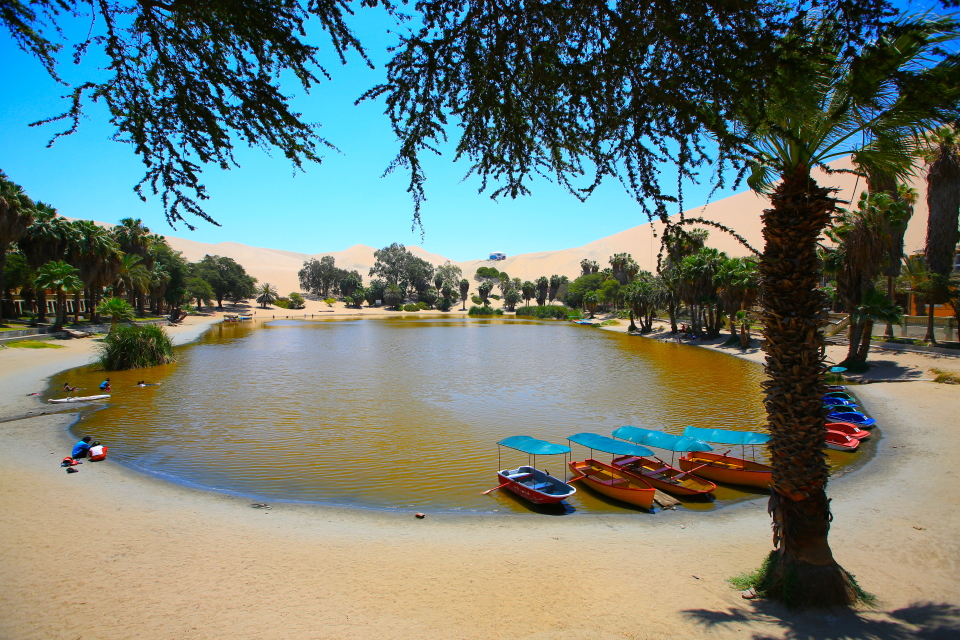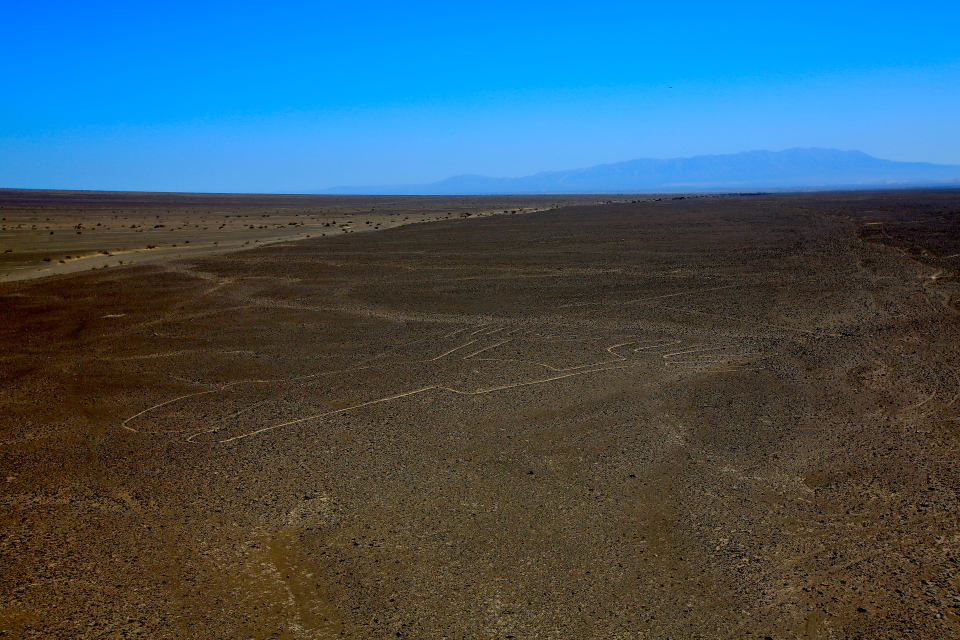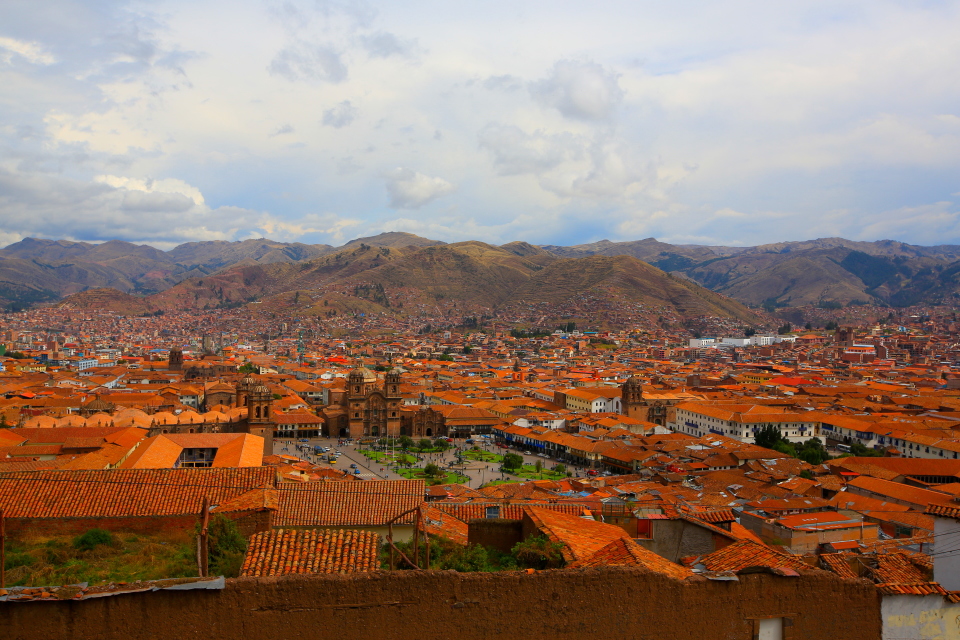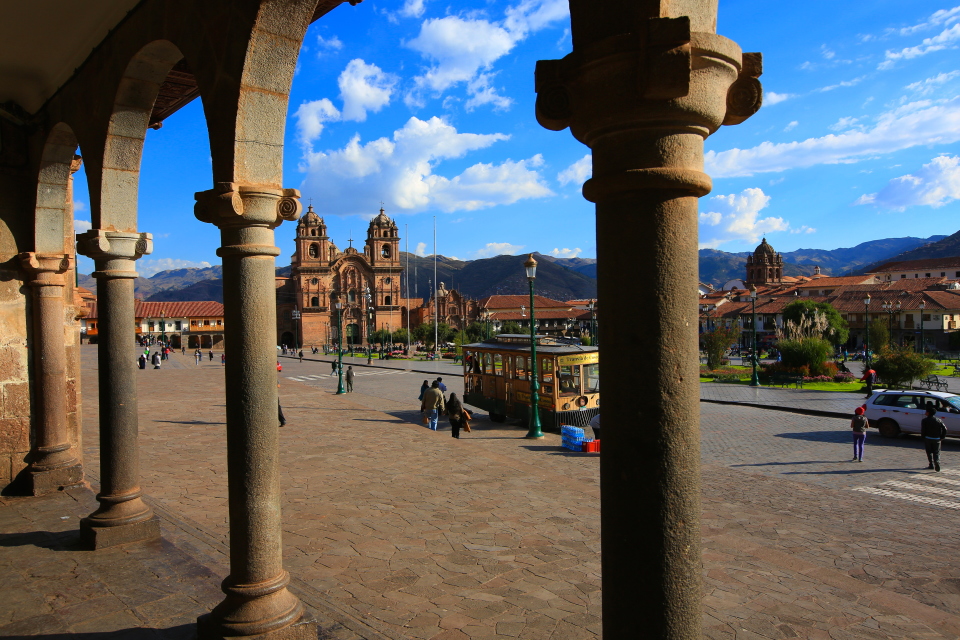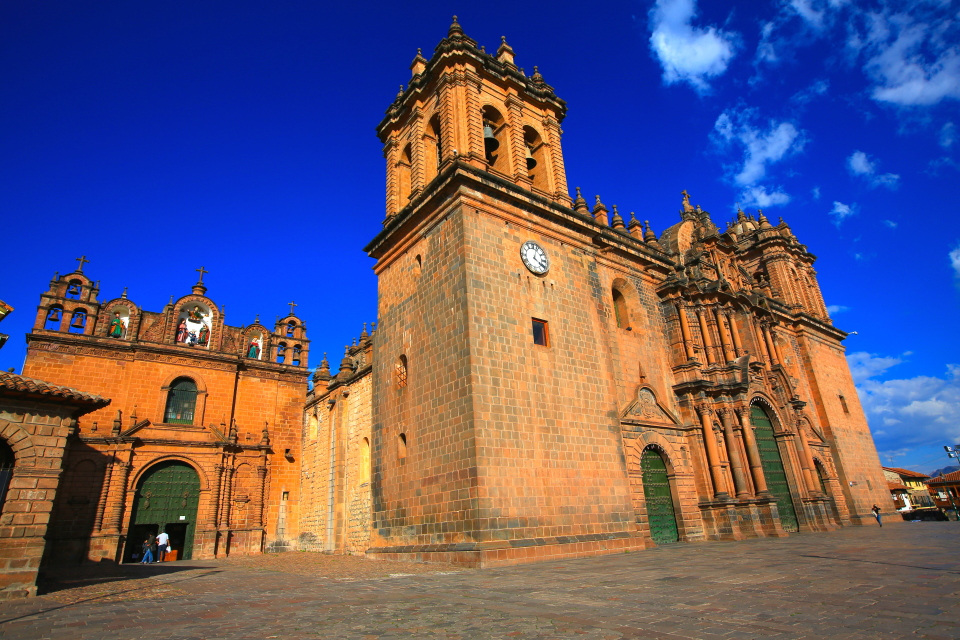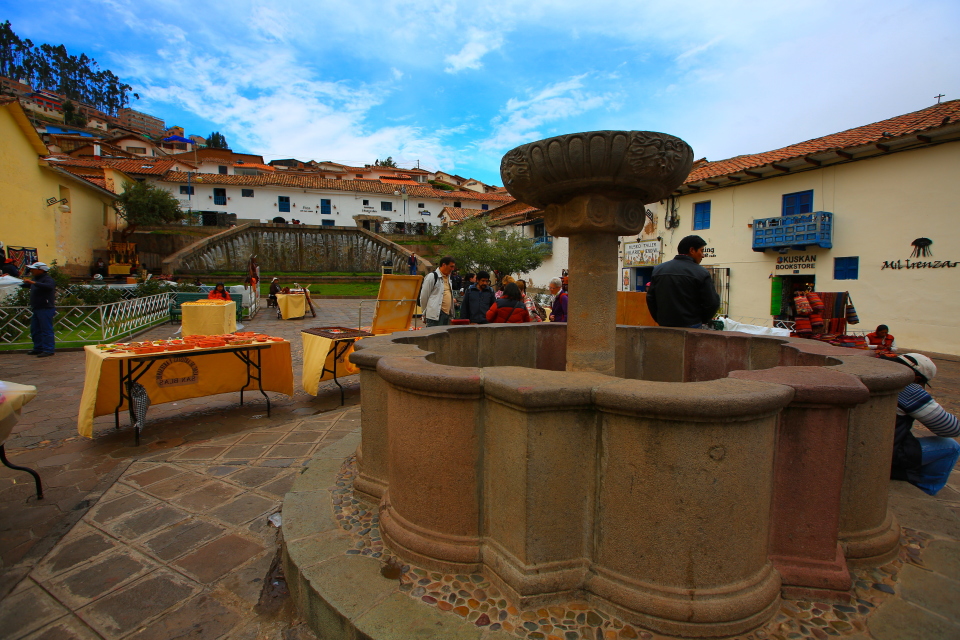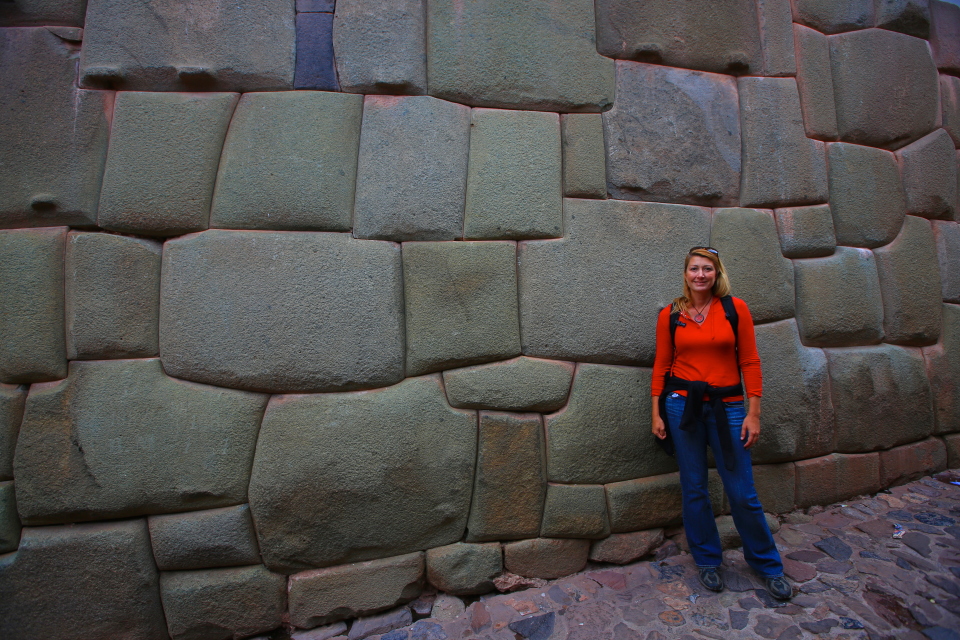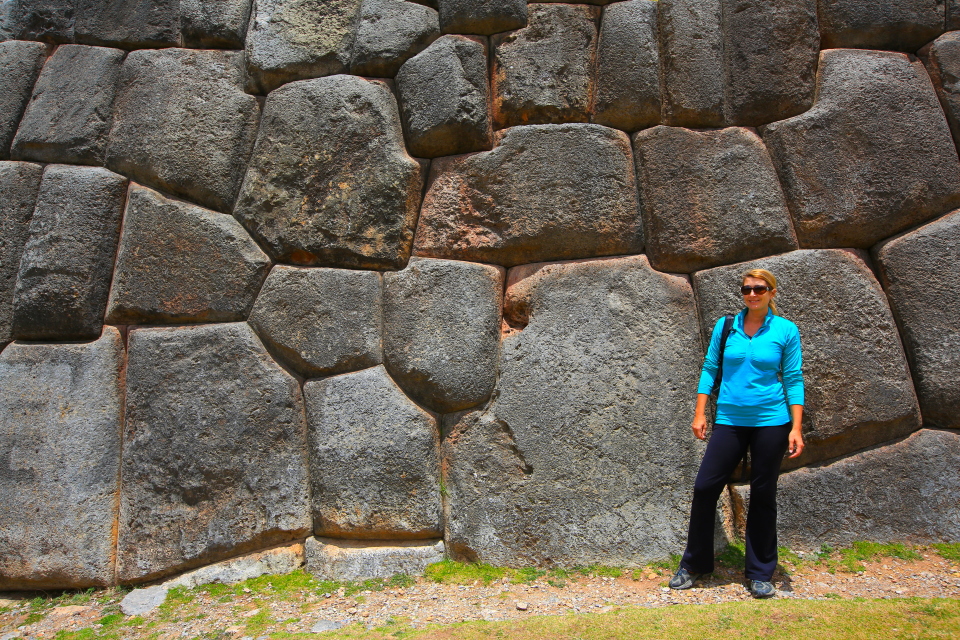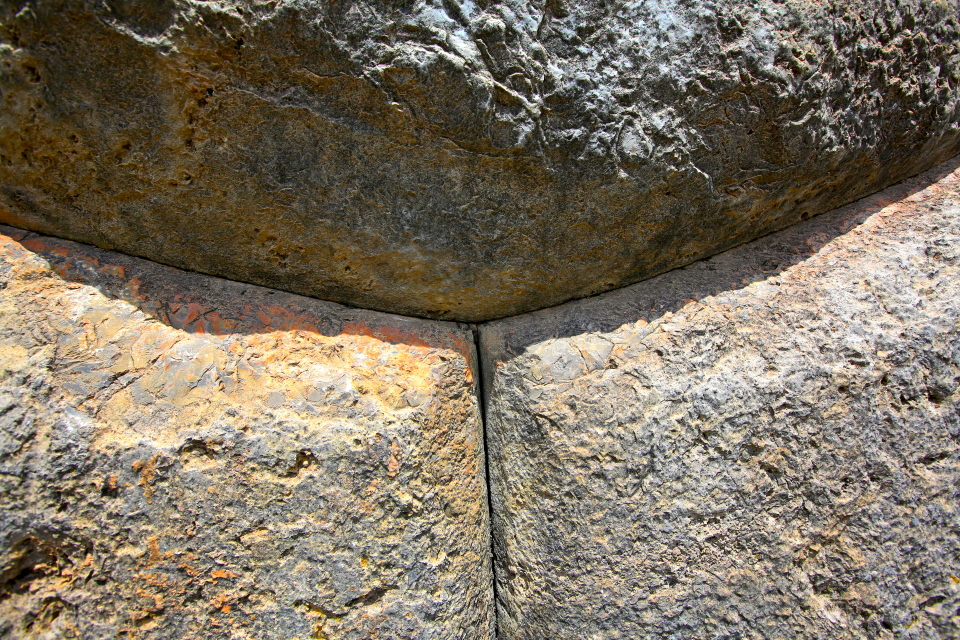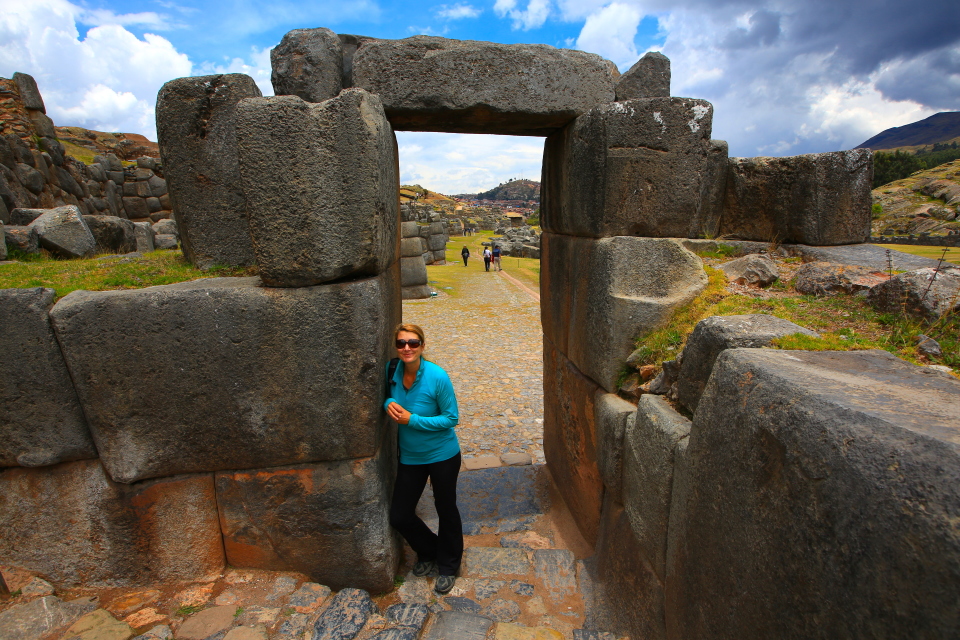From Paracas we headed to the sacred valley, an area around Cusco where the majority of the more touristed Incan archaelogical sites are (including Machu Pichu). We expected that this drive would take us several days because there was a bunch of stuff we wanted to see along the way.
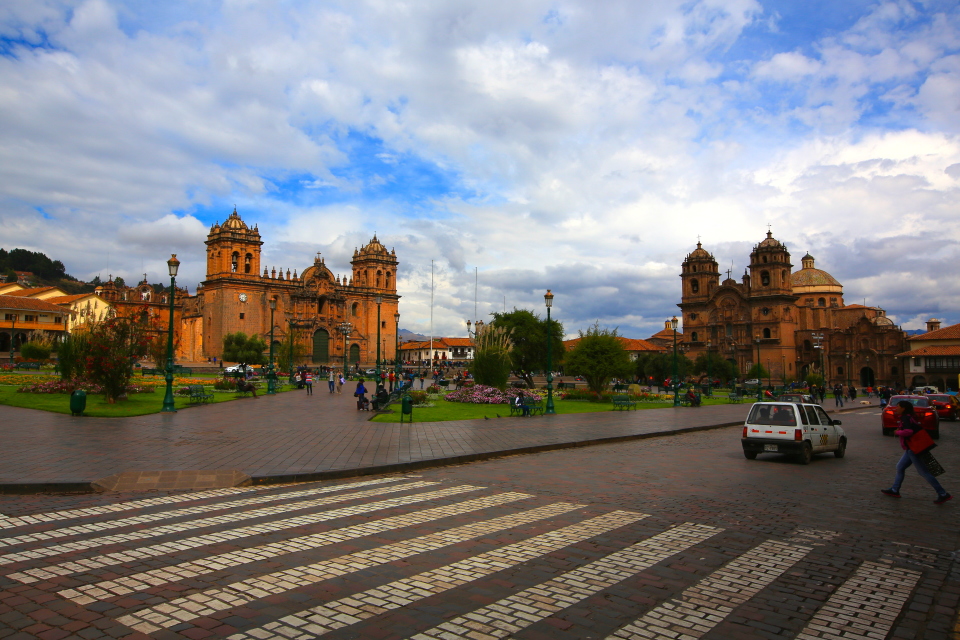
From Paracas, we headed towards Cusco, but it was a long drive that took us several days. This photo is of the Plaza de Armas in Cusco.
Huacachina
First up for us was Huacachina, a small oasis town surrounded by sand dunes. Our guide books couldn’t stop talking about this place and how much fun there is to be had here: you can take dune buggies out on the sand dunes, ride snowboards down the dune faces, and soak up sun at the little oasis pond.
We arrived around lunch time and were decidedly unimpressed. The place just felt like it had been overrun with tourists. There were signs in english for pizza and hostels and camping everywhere. The campsites were cramped and looked a bit run down. We ate lunch, took a few pictures, and decided to hit the road again rather than spend more time here.
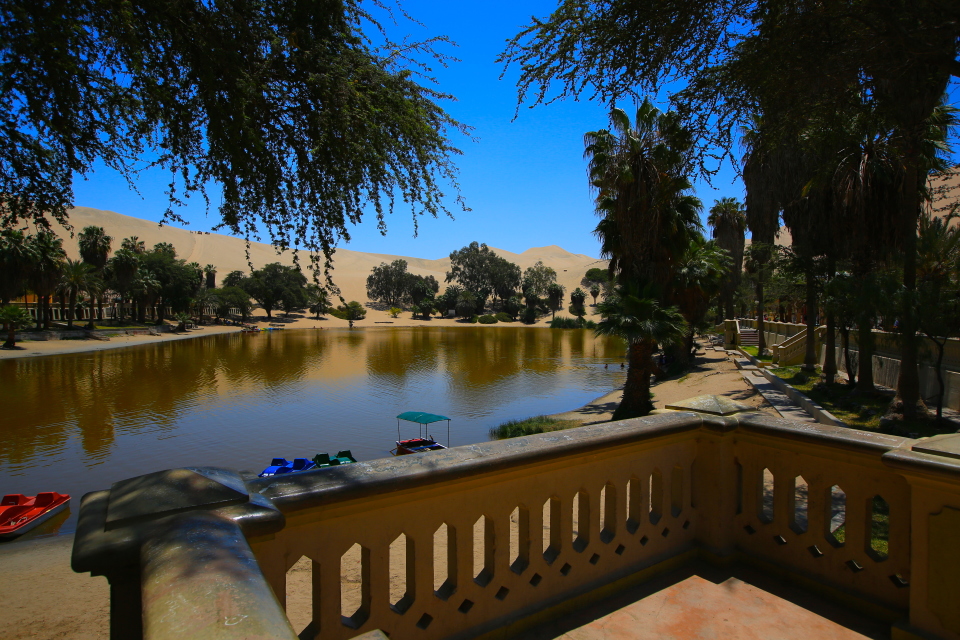
You can just make out some tiny dots up on the dunes in this picture showing some tourists on a tour of the dunes.
I hate to be so down on Huacachina, but remember we were just coming off one of the highlights of the trip: Paracas National Park. I think sometimes our guide books focus on places that are more accessible to backpackers (like Huacachina), while they seem to glaze over places like Paracas which are harder to get to. This is one of the reasons we love having a vehicle to explore all the off-the-beaten track places like Paracas.
Nazca Lines
After Huacachina, the next hot spot on our list was the Nazca Lines. These lines were made by an ancient culture between 500 BC and AD 500 and were discovered in the late 1920s when the first airplanes were flying over the area. They include more than 70 figures of humans and animals as well as over 10,000 lines. Their original purpose of the lines isn’t clear, but there are lots of theories. Some believe it was an astronomical calendar; others believe it was a ceremonial site. I saw a TV show that claimed aliens were somehow responsible and/or involved in their construction (crop circles anyone?).
The best way to see the Nazca Lines is from an airplane (they are huge). We considered the airplane idea briefly, but heard from other travelers that you’re almost guaranteed to experience some nausea and there’s a good chance you’ll throw up (the little planes have to bank pretty steeply to get the best views of the formations). Instead, we decided to just see what we could see from the pan-american highway. There is a viewing platform where you can gain a decent vantage point to see some of the formations. While I’m sure this is nowhere near as impressive a view as from a plane, you are guaranteed to avoid motion sickness!
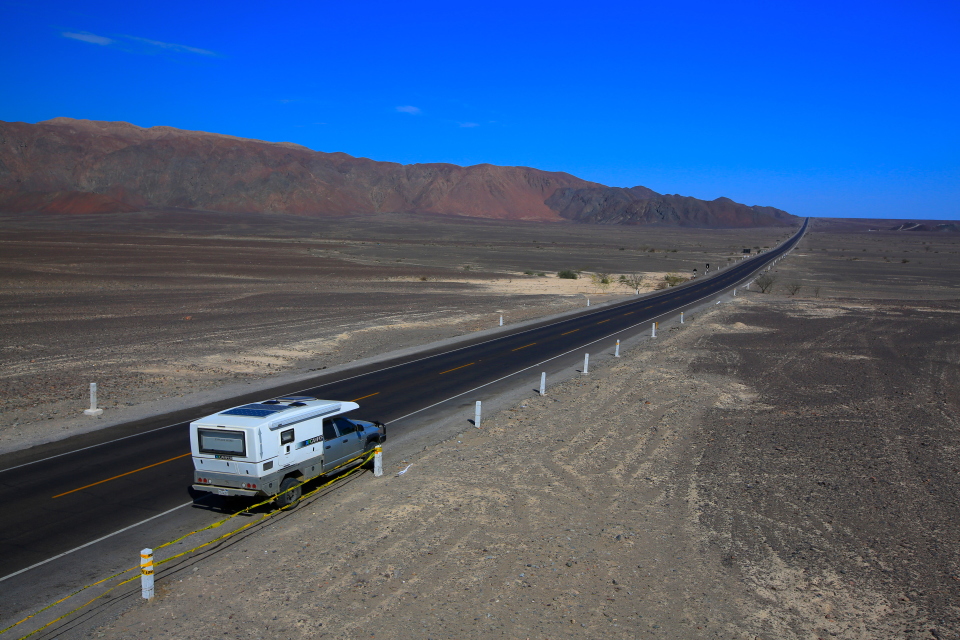
There is a spot to pull over right on the pan-american highway with a viewing platform for the Nazca Lines.
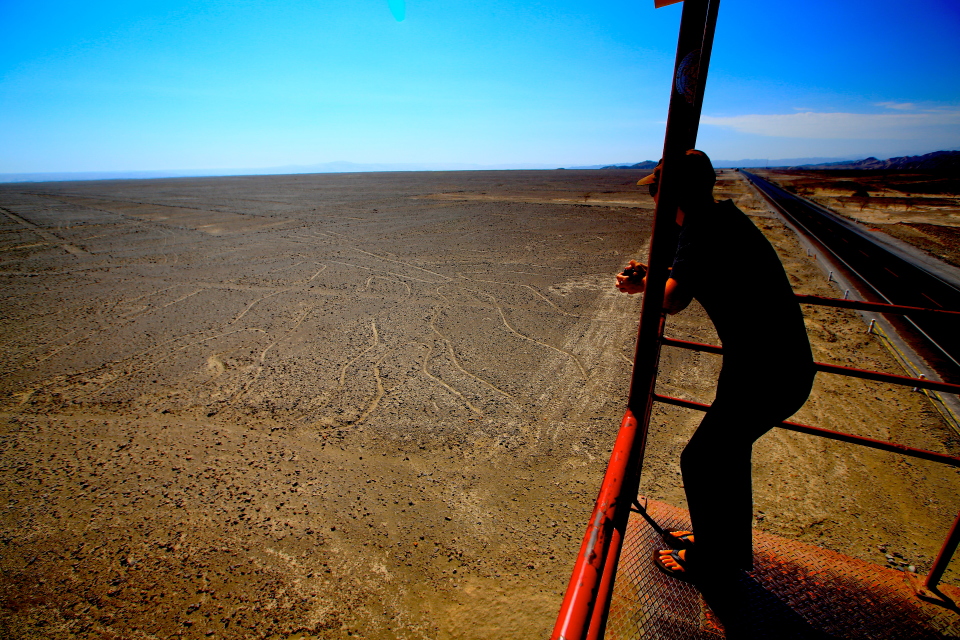
This was definitely interesting to see; it only takes a few minutes if you just visit the viewing platform like we did.
On the Road Again…
From Nazca, we started to climb up into the Andes again and the roads got windier and the weather turned cooler. We stopped at an Alpaca Reserve to camp for the night and realized we were at nearly 13,000 feet! That’s a hard adjustment considering we were coming from sea level. It was getting late and the sun was setting so we just didn’t have much of a choice. We climbed into the XPCamper and just tried to take it easy while we settled in for the night.
The next day we continued on towards Cusco. The drive here was nice, but the roads were windy and the going was much slower. We ended up spending another night along the way (luckily the altitude was more reasonable – only about 8,000 feet).
Finally, on our third day of driving, we reached Cusco. I was exhausted from the driving, but we still had to navigate across the city to reach the campground we were aiming for. This turned out to be much more difficult than I anticipated; I definitely didn’t go the best way.
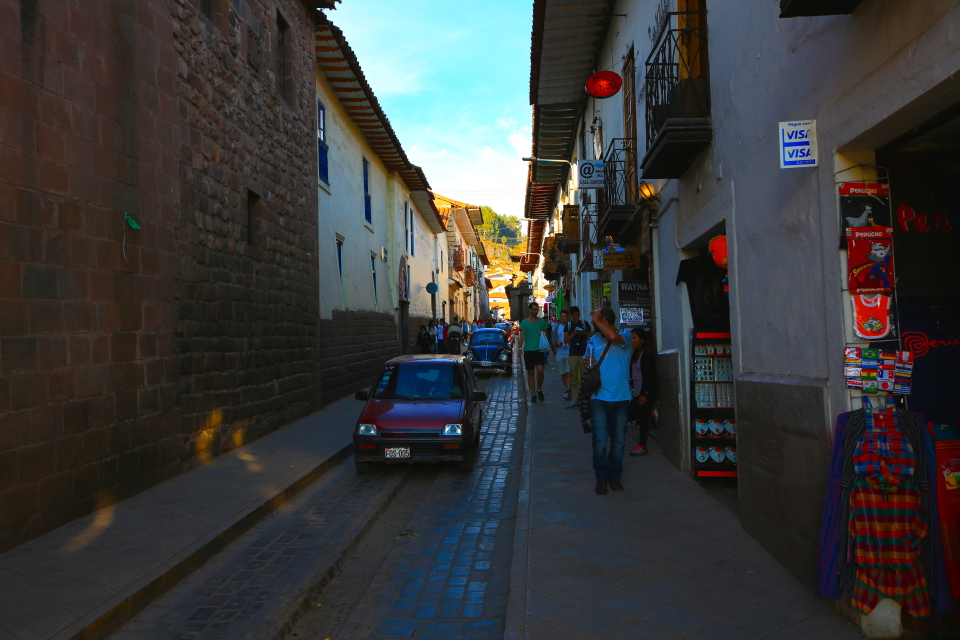
We took the XPCamper in on this road and just barely fit! Plan your route well if you need to drive across Cusco.
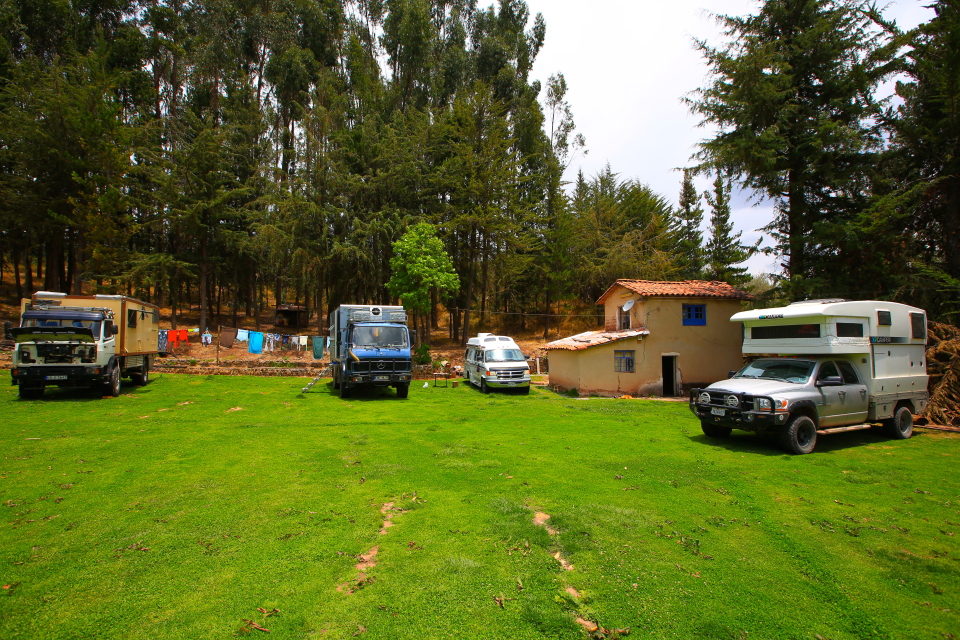
There is only one campground we are aware of in Cusco, and it seems like a stopping point for just about every overlander we’ve met. It was fun to see all the different rigs here.
Cusco
Cusco is one of those cities that we were really looking forward to visiting. We’d seen pictures and heard about it and I was really expecting to fall in love with it. From our campground up on the hills above the city center, we walked down to check things out.
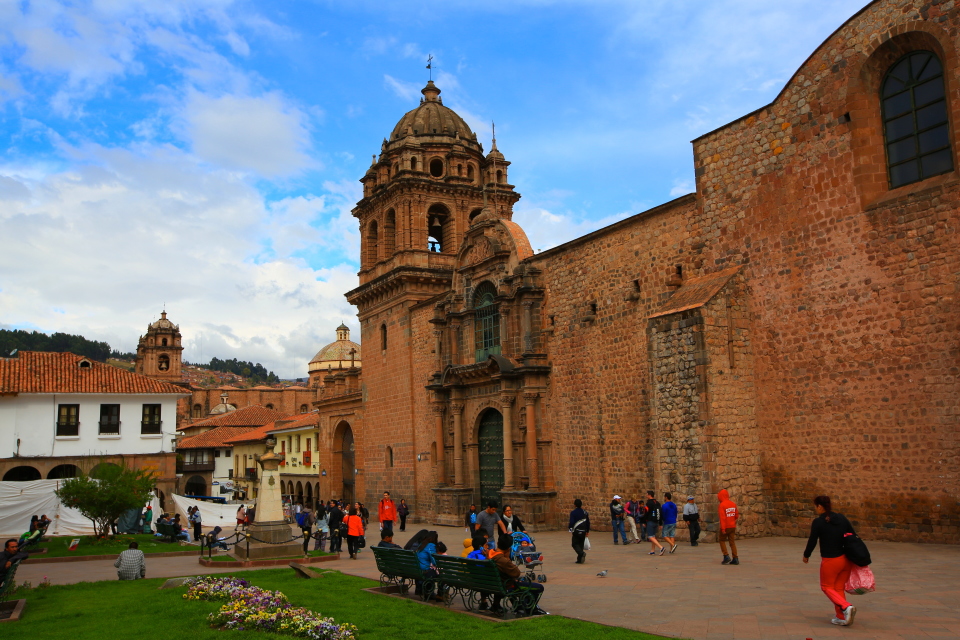
The old cathedrals and the plaza were full of people. The broad sidewalks make this part of the city easy to navigate on foot.
Unfortunately, we didn’t have the love affair with Cusco that we expected. The city is jam-packed with tourists. Everywhere you go vendors are trying to sell their goods or give you a massage. There are TWO North Face stores within about a block of each other. We went into an ice-cream store that was unfortunately out of ice cream and after the owner apologized he immediately offered us a massage!
Maybe I can just blame it on Paracas National Park again. After being in such a beautiful place that was so remote that we felt that we had the entire park to ourselves, it was hard to go back to being so cramped in a city that we were sharing with 10,000 other tourists.
My favorite part of Cusco was seeing some of the walls that were built by the Incas. This was our first close-up view of this amazing engineering feat. The rocks in the walls are carved and fitted together so well that there isn’t even enough space for a needle to fit between them!
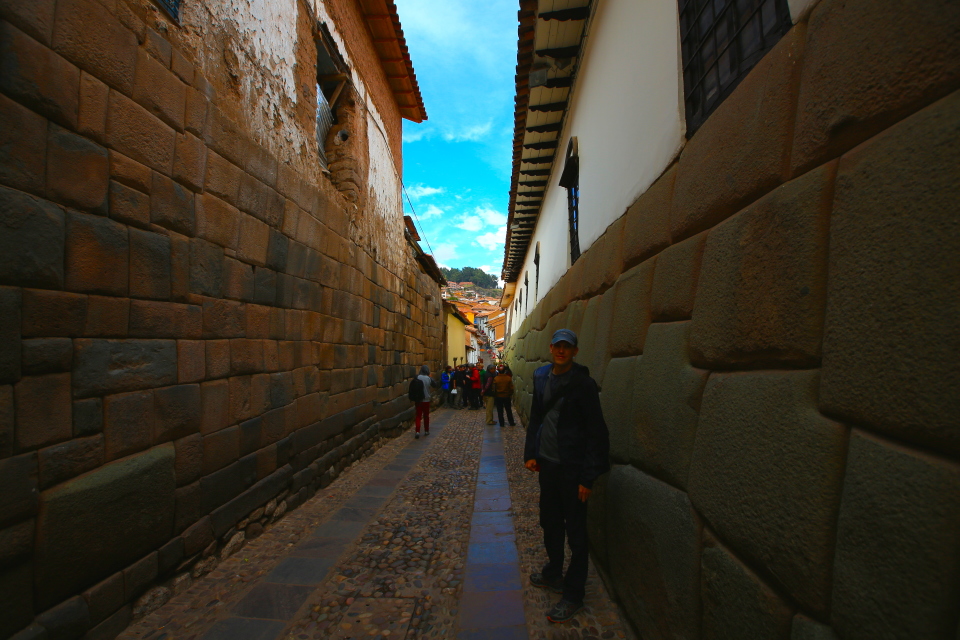
These walls have survived many earthquakes and have outlasted many of the walls that have been built since the spanish conquest.
Sacsayhuaman
Cusco is an old Incan city, and on the outskirts of town there is an archaeological site that has the remains of a military fortress that protected the city. The archaeological site is named “Sacsayhuaman” and it is pronounced like “sexy woman”. If you are in Cusco, this site is definitely worth a visit. Not only do you get to visit an amazing Incan site, but you will also get some great views of the city.
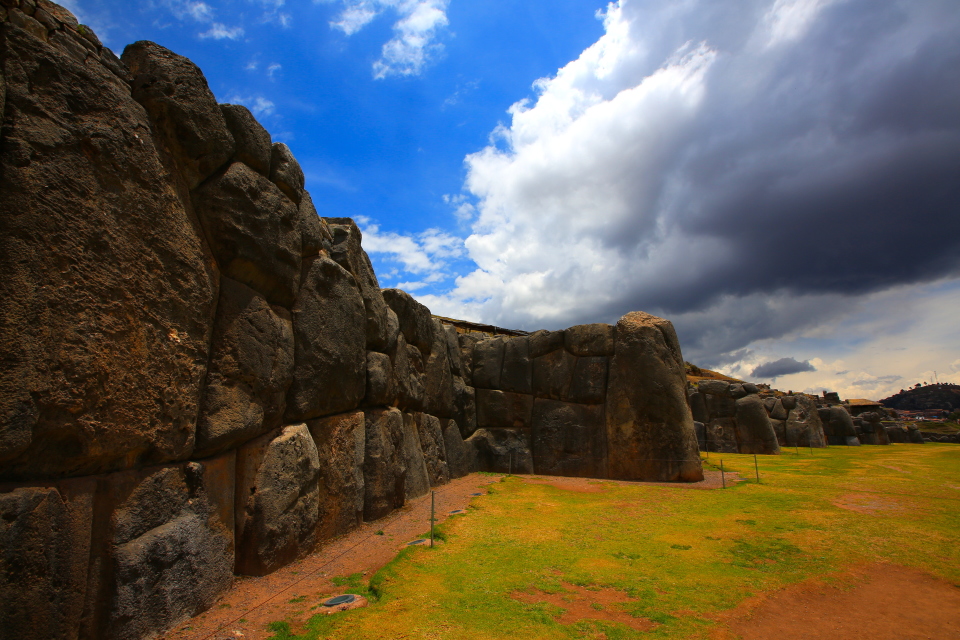
The Incas built Cusco in the shape of a Puma, with Sacsayhuaman as the head. These ridged walls represented the teeth of the Puma.
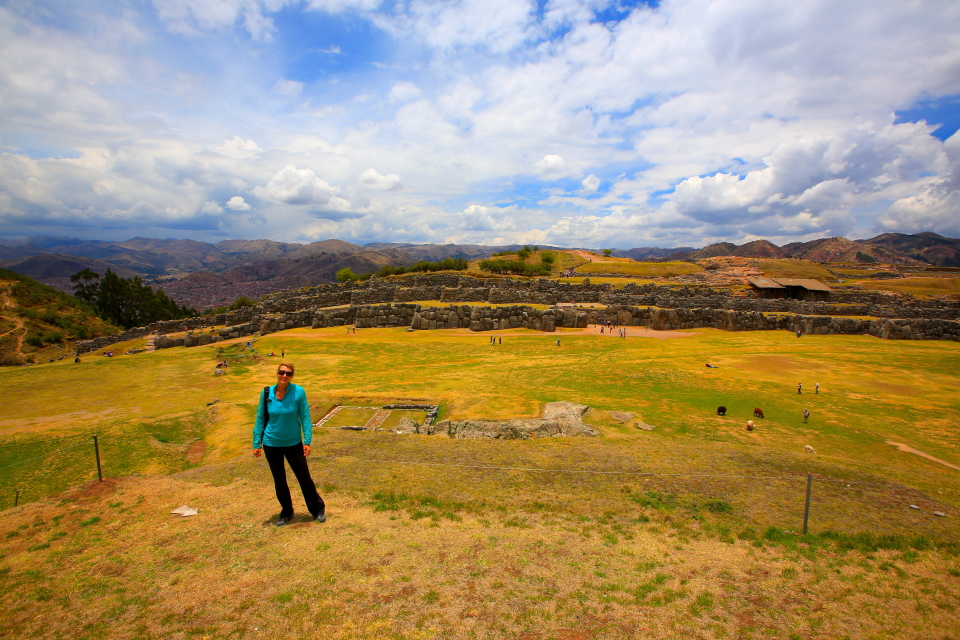
This site is so large that the entire population of Cusco would have been able to seek shelter here if there was a disaster.
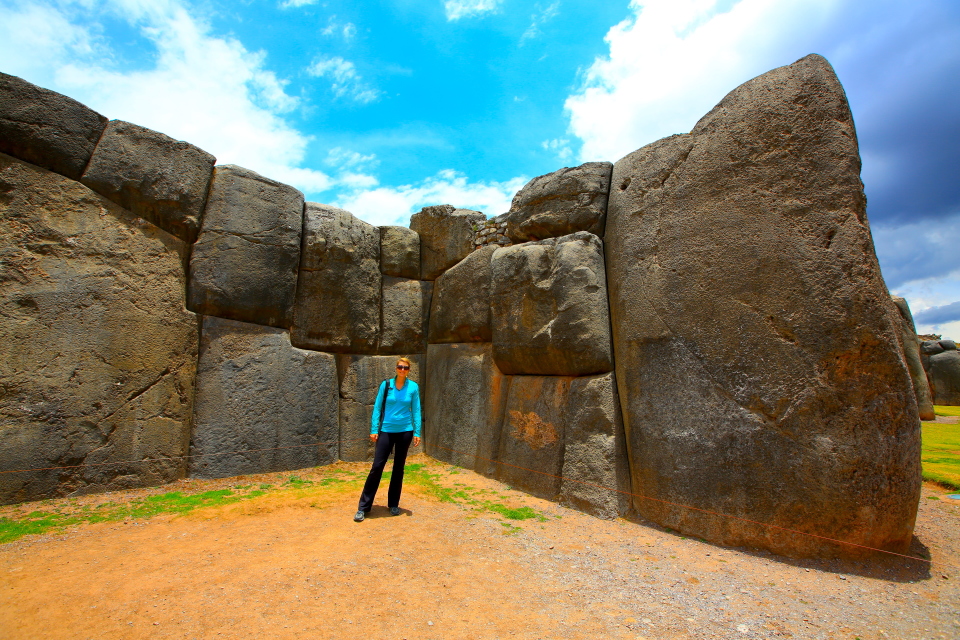
The largest stone used in the wall weighs about 350 tons! Supposedly it took 20,000 people to maneuver it into place and thousands of people were crushed to death when it accidentally toppled over while being moved into place (so say the legends..).
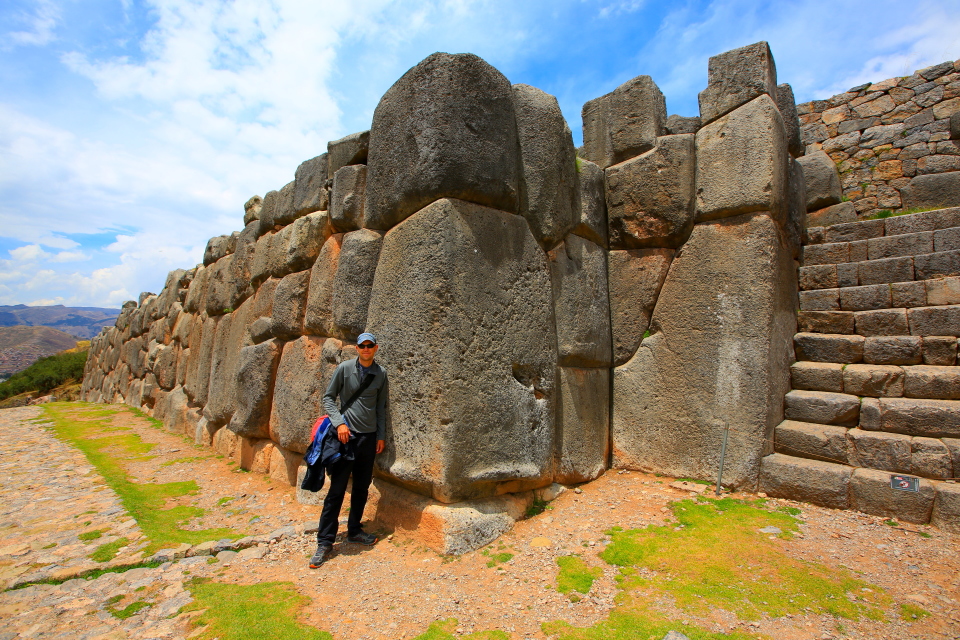
The walls are about 17 feet high and they stretch for about 1,000 feet. Sadly, we can’t see all the walls and towers in Sacsayhuaman because the Spanish used this as a quarry to build homes and cathedrals after conquering the Incas.
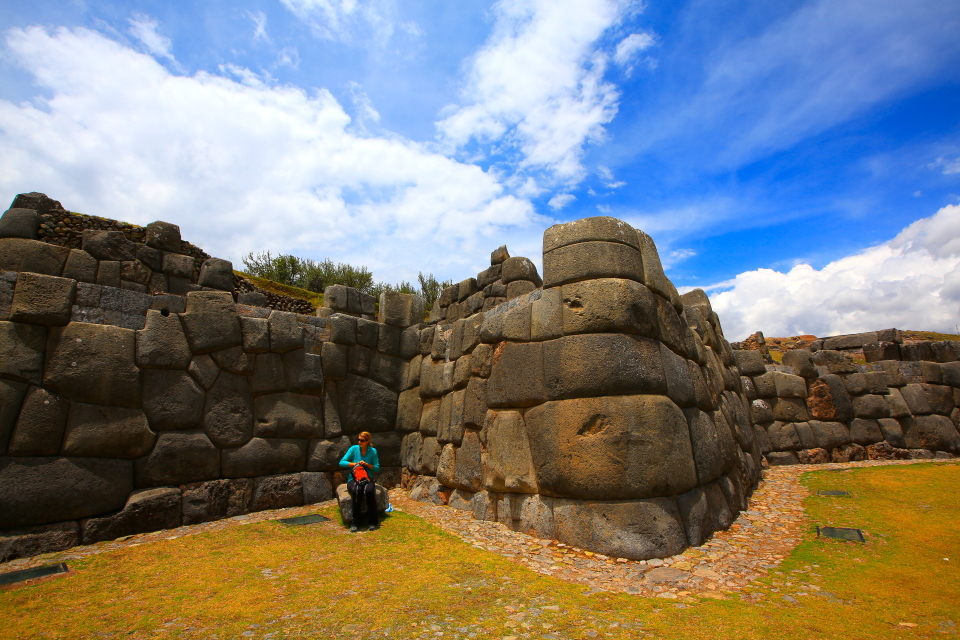
The zig-zag shape of the walls gave the defenders an advantage while defending it against attackers.
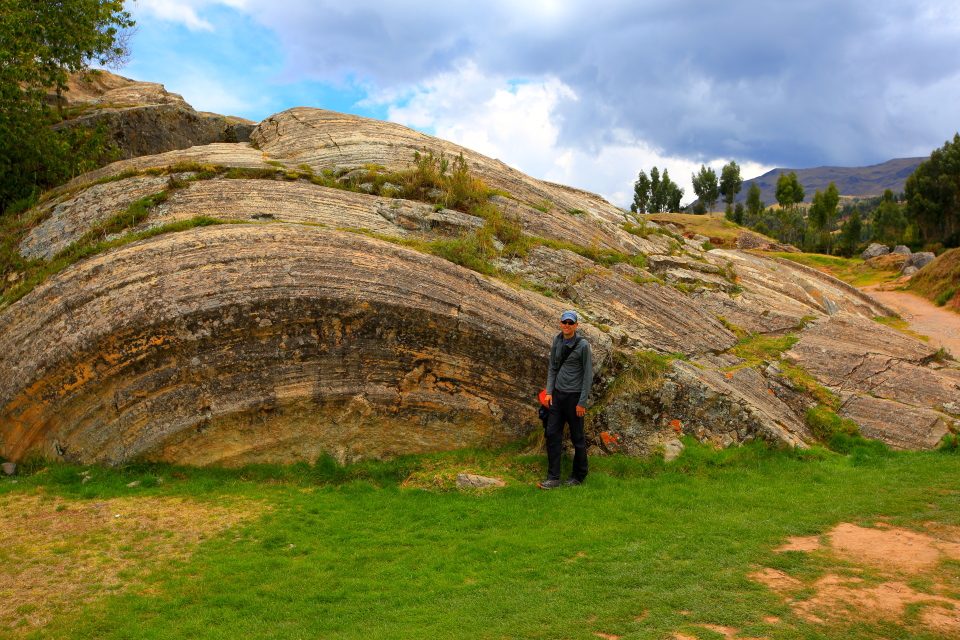
These rocks we found in the site reminded me of my dad (he’s a geologist); it appears that they may have been carved by glaciers.
After three nights in Cusco we’d had enough. I will say that on the drive out I was extremely careful while planning my route on the GPS and was able to avoid the craziness I encountered on the way in!
Coming up next: our quest to visit Machu Pichu after a massive land slide buried the only road in.














